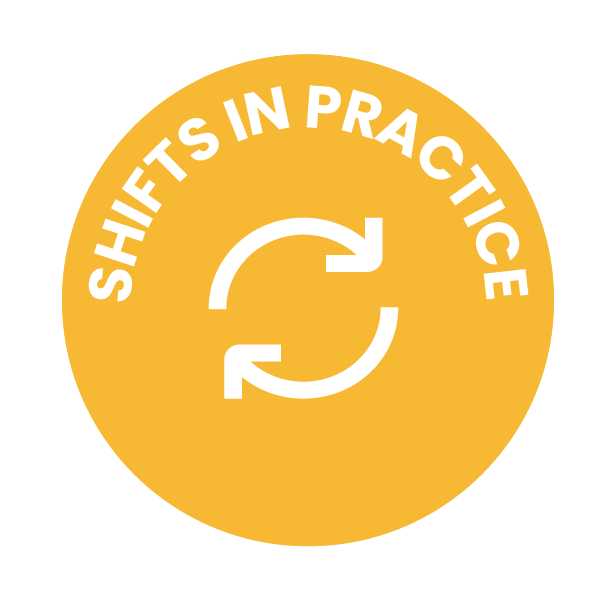AI Essentials for Educators: Where to Begin
As the Professional Learning team at GOA, we are grateful to get to listen to and learn from educators around the world. When it comes to AI, one of the consistent questions we’re hearing across grade levels, schools, and content areas is, “where do I begin?” When so many tools are available, how does an educator find their way and then get started in a direction that matters?
“Where do I begin” is one of the questions that framed the development of GOA’s new, free course launching in January: AI Essentials for Educators. Our hope is that this experience offers participants a personalized pathway for more intentional AI integration. Through curated resources, clear starting points, and essential must-knows, participants will gain greater understanding, confidence, and readiness in partnering with AI.
UNDERSTANDING
We can’t partner with AI if we don’t have a basic understanding of what it is and why it matters.
Resources that are helping us frame our understanding are the work of Ethan and Lilach Mollick. Their Wharton School video series offers clear explanations of the foundational what and why of AI. If you’re confused by the acronyms and jargon of AI, their ten minute video, “Introduction to AI for Teachers and Students” provides a crash course in the basics.
After we have an understanding of what it is, it’s important to recognize AI’s limitations and concerns. Learning about considerations like algorithm bias and how AI generates content helps educators partner with AI thoughtfully and safely.
And perhaps the most important piece of foundational understanding is regrounding in what we already prioritize as educators. The Mollicks affirm in their video above that AI is a tool, not a mind, and it partners with--not replaces--educators in supporting the great things they are already doing. If we are going to use AI in our practice, we need to be using it in ways that amplify our values. An important component of that amplification is returning to our standards of success. In the course, we ask participants to revisit their learning goals and mission statements. What do we care about in our students’ learning experiences? What matters to us in our daily practice? And then, how can AI partner in emphasizing and reaching those goals?
Grounded in a basic understanding of AI, an awareness of limitations and concerns, and most of all--a reminder of what really matters to us in education--we’re ready to develop confidence in using AI.
CONFIDENCE
“Our big advice is use AI. You need to use these systems enough to understand how they work, where they work, and where they don’t work.” - Ethan and Lilach Mollick
With so many AI options now available to educators, it can be overwhelming to know where to start. Building confidence to partner with AI tools, like most skill-building, comes through hands-on experience. We recommend beginning with play.
Play with games.
Play with prompts.
Play with inspiration from others’ ideas.
This experience of discovering A.I. in a hands-on way can empower us to identify possibilities we can bring back to our educator practice. We don’t have to have a goal in what we’re trying out; just choosing a tool and engaging in low-stakes activities allows us to lean into curiosity while developing competence and confidence in navigating A.I.
In our AI Essentials for Educators course, we play with AI through the daily routine of meal planning. Amy Choi walks us through what that would look like with select tools like Perplexity:
As a Professional Learning team, we’re finding our confidence and skill sets grow by practicing AI tools together. Videos like Amy’s, where we demonstrate the actual process of using tools, helps the rest of us take steps in more confident directions. In the course, we invite educators to try out various platforms with us, sharing AI tools we have found helpful as well as times when we have experienced their limitations. By playing and reflecting in community we hope that confidence and curiosity grows for all of us.
READINESS
“There isn’t one right way, there is the way that works for you within the parameters of your situation.” -Maha Bali
Once you’ve developed an understanding of how AI benefits you and you start to grow some hands-on confidence with AI tools, put your learning into practice through purposeful integration in your educator practice. What do you want to speed up? What’s exciting to you? What do you want to try? A helpful reflection framework to borrow is efficiency, effectiveness, and innovation. In what ways can I be more efficient? What regular routine could be more effective? How do I want to innovate?
Reflecting on that framework, identify a specific need in your educator practice. Do you spend a lot of time on student feedback? Could you use support in drafting communications? Would you like to differentiate practice problems? Select a task to launch your AI integration journey.
For example, you could experiment with using ChatGPT to draft a blog post update for families. Across content areas, teachers can create formative assessment tools, rubrics, and choice boards in MagicSchool. A bot like Poe can partner with you in thinking through lesson planning. We acknowledge hat just naming a variety of tool options runs the risk of generating overwhelm; and, when we engage in our AI adventures by first playing and then trying out a specific task and tool, we set ourselves to move beyond the overwhelm and to experience incremental success.
CONCLUSION
The expansive world of AI can is a lot to navigate. And progressing from information to hands-on play to intentional integration can steer us in the right direction. We are hopeful that moving from understanding to confidence to readiness will empower educators to know, “I can do this, and I can do this tomorrow!”
Join us in our three to five hour asynchronous course, AI Essentials for Educators to move from understanding to confidence to readiness. AI Essentials for Educators is free to any educator and is offered monthly January through May. Additionally, if you’re in a space of readiness right now, consider joining one of our monthly cohorts to practice purposeful integration of AI in your assessment practice: Assess for Learning with AI.
For more, see:
- How Schools Can Elevate Their AI Strategy: Essential Building Blocks
- How AI Can Support Agency in Our Students, and in Us
- What We’re Learning from Students and Schools in the Age of AI

This post is part of our Shifts in Practice series, which features educator voices from GOA’s network and seeks to share practical strategies that create shifts in educator practice. Are you an educator interested in submitting an article for potential publication on our Insights blog? If so, please read Contribute Your Voice to Share Shifts in Practice and follow the directions. We look forward to featuring your voice, insights, and ideas.
GOA serves students, teachers, and leaders and is comprised of member schools from around the world, including independent, international, charter, and public schools. Learn more about Becoming a Member. Our professional learning opportunities are open to any educator or school team. Follow us on LinkedIn and X. To stay up to date on GOA learning opportunities, sign up for our newsletter.
